Curator Nurit Avesar created a rapid – or First Response to the 2016 election. Gathering artists with a mission, she pulled together a vibrant group show that is as lush and encompassing as it is politically potent.
The show, which just closed at Keystone Art Space, included work by Elana Kundell, Janet Neuwalder, Kim Abeles, Bobbie Moline-Kramer, Peggy Pownall, Susan Kurland, Nicholas Coroneos, Nadege Monchera Baer, Kristine Schomaker, Scott Froschauer, Molly Segal, Kio Griffith, David Estrada, Marcus Durkheim, Sigrid Orlet and Avesar herself.
“The election hit us so hard, it was overwhelming. We feel so vulnerable and bombarded. Really, many of us couldn’t do artwork in the usual way, there was a push to do something,” Avesar says. “So I said, let’s do a group show, and it just came together. Some pieces are new for the show, and others were pieces that the artists already had which fit well thematically. For example, Nadege Monchera Baer does a lot of work about destruction, and Nicholas Coroneos work has a very cynical take on church corruption, on abuses of power in general, on the money behind it and that sort of thing.”
Above, the vibrant deconstruction by Nadege Monchera Baer is composed of colored pencil and acrylic on Dura-Lar. The work pulls the viewer into the gorgeous wreckage and leaves her dangling. The title says it all “And Then…” a stunning emotional precipice.
Above, the delicate, profound watercolor and gouache work of Molly Segal. The large scale of her works on paper makes the miraculous detail of her work even more exciting. A dream-like sadness touches her art, which expresses the wildness of nature – nature that will, in the end, outlast man’s wildest foibles and strangest regimes.
Above, Scott Froschauer, whose rich sepia images are creating using gun powder of the same kind involved in the tragedies at Sandy Hook Elementary and in Memphis.
Above, Kristine Schomaker says “My current work is part of a new cross-platform project called “An Ode to a Lost Love” whose leitmotif addresses the de(con)struction of self in relation to society’s perception/projection/reflection of beauty. This work focuses on the complexities of gender identity, body image, and the societal privileging of women’s physical beauty over character and intellect.”
Curator Avesar notes that “This show is about the current political situation and the realization that our most basic democratic ideals are being threatened, giving way to unapologetic abuse of power and special interests. As artists, we use images to articulate our first response to these uncertain times. Looking back into recent world history, we examine the use of propaganda to incite hate, blame others, spread lies and fear.”
Above: Kim Abeles created a brand new interactive mixed-media piece for the exhibition.
“It felt very good to be busy having a conversation with people about what is going on every day. The exhibition is opening a conversation that’s on-going. I’m not sure if this is the only political show I will do. The artists felt sincerely compelled to do this one,” Avesar notes.
Incredibly delicate and beautiful works by Susan Kurland above and below. The ethereal nature of the materials, both fabric and wax, add to the poignancy of the works.
Janet Neuwalder’s installation “The First 100 Days” are books which have, according to the artist, been unbound, unhinged, reformatted and made neutral by eliminating the powerful content of descriptive language. “Verbs, adjectives, and other words that shape the images we see when we read and convey information important to reader and writer, have been removed. …By limiting information for the reader, I start to control the flow of information. This process takes time. I found it difficult to change some of these books I cared about. They became forever changed. I imagine, if books kept becoming ‘neutral,’ within a few generations, so much might be lost. Perhaps, the painters would be the chosen ones to memorize the books and become the living memory banks of these books.”
“This show started a momentum for us. We wanted to create a sense of empowerment from having a conversation together, and not feeling so isolated in the world,” Avesar attests. “We started the show before the Muslim ban and immigration executive order happened, but everything ended up being so appropriate,” she adds of her prescient exhibition.
Above, Nicholas Coroneos. So many strings attached…
Above, Avesar in the heart of her exhibition.
Above, Kio Griffith’s old-fashioned dark room photos felt like an exhibition-must for Avesar to include. “The piece is done using traditional darkroom composite photography. He created this piece using photos he shot while a recent trip to Japan. The complex nature of the black and white prints and their humanity resembles images from the 1950s, and yet the work is very contemporary. There is heaviness and beauty to them.” The title of the piece is “Who Can Say that We Can’t Live Like Dogs.”
Above, Nicholas Coroneos. The sculptural piece says it well: we are cashing out.
Above, left – Avesar’s own textured, raw abstracts speak of the outrage and fierceness of #resist. To the right, David Estrada.
“Artists like to do things with their hands. This show is a gut-feeling show,” Avesar relates. “I started talking to artists in January, so this show was put up very quickly, some pieces were wet when we hung them.”
Perhaps this haste lends to the fresh, multi-faceted look of this exhibition.
Susan Kurland and Avesar collaborated on “The Making of America,” below, an interactive work. “People who came to the opening and visited the show put most of the ribbons up. The idea was to get everyone to participate in the making of this piece, which consists of multi-colored ribbons tied on a wire sculpture in the shape of the map of the U.S. It represents the many different cultures in America, and the nation’s multi-faceted and rich fabric,” Avesar says.
“We wanted to end things on a more positive note, for people to stay informed and connected,” Avesar adds.
Above, “Blaze” by Nadege Monchera Baer.
An important exhibition both visually and intellectually, First Response will not be these artists’ last word on our politics and our people.
- Genie Davis; photos: Jack Burke, Genie Davis



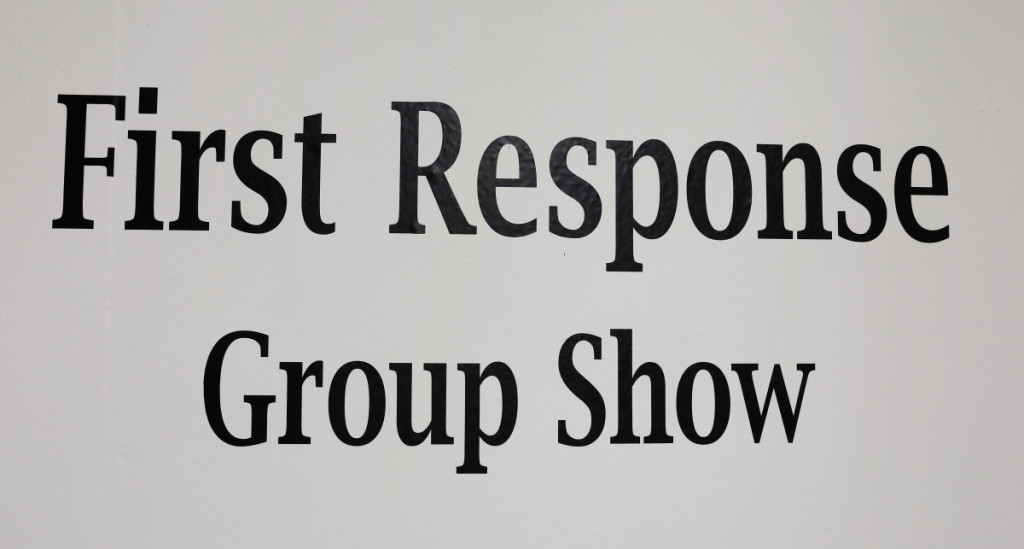
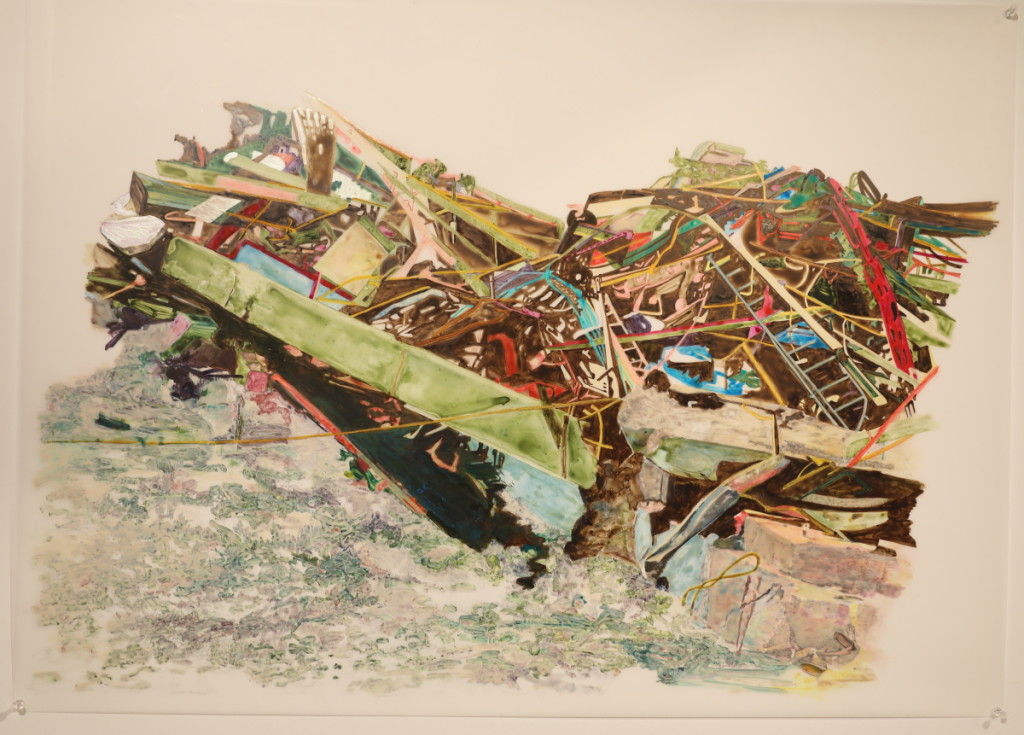
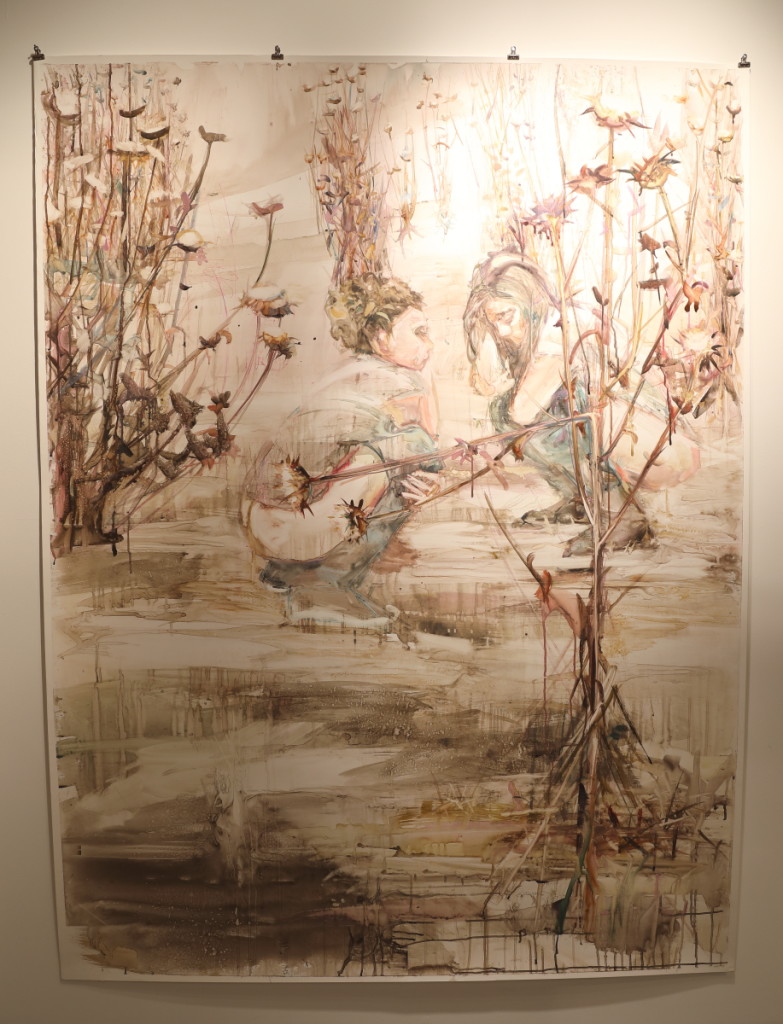
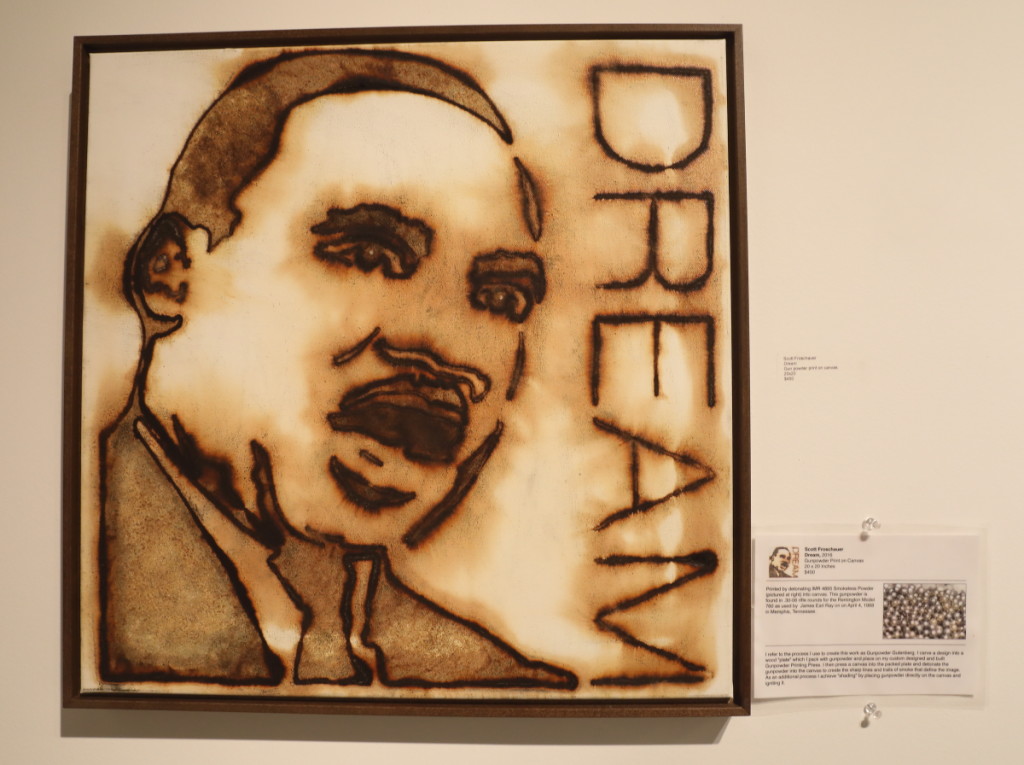
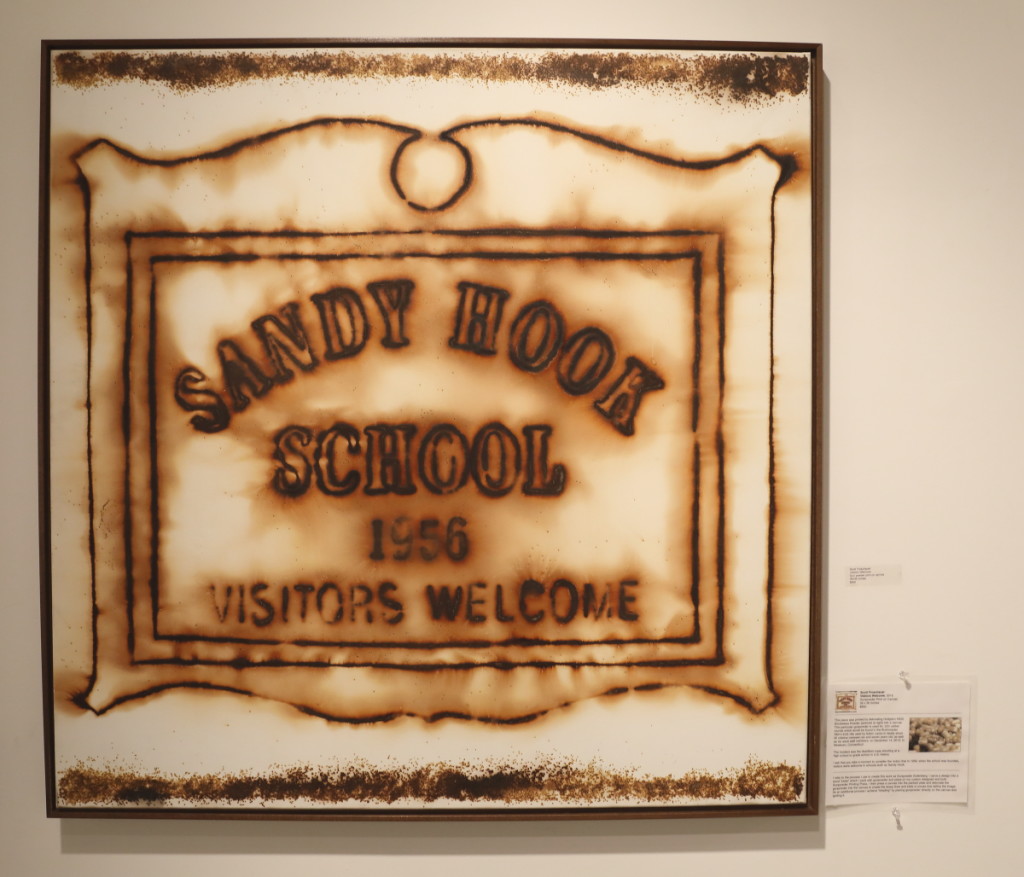
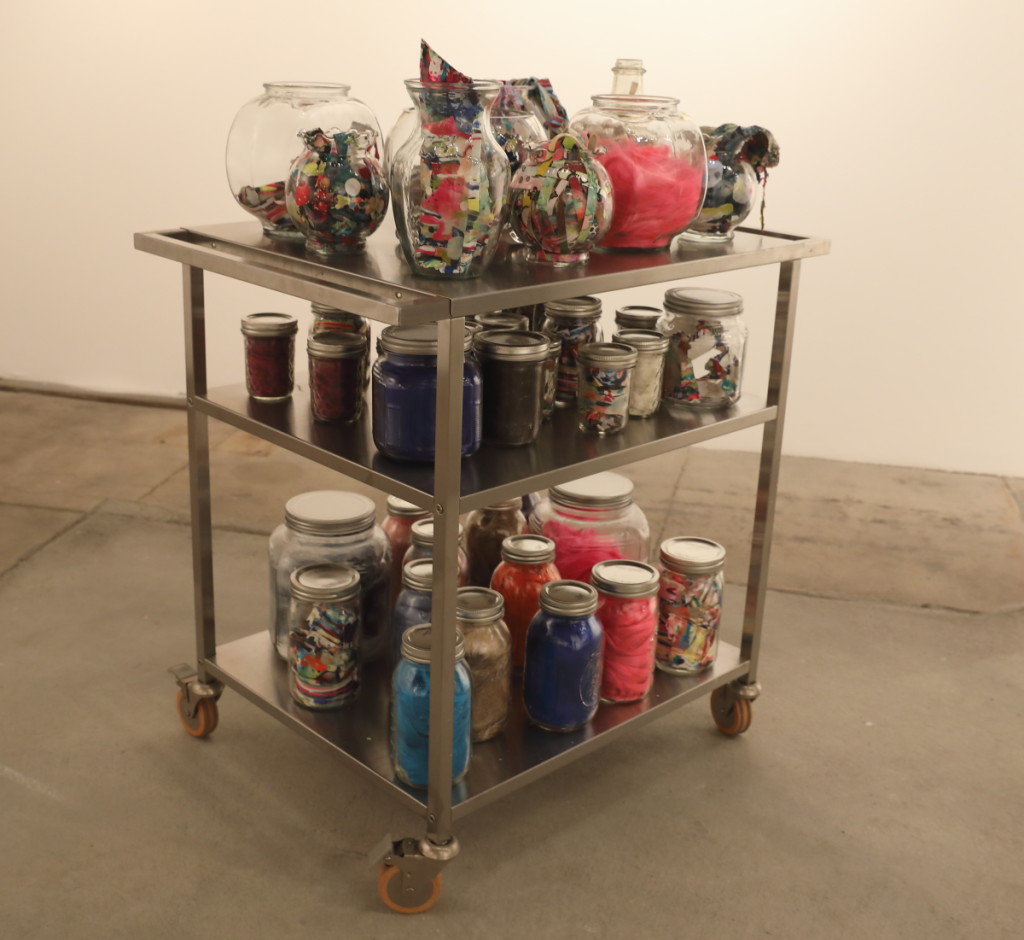

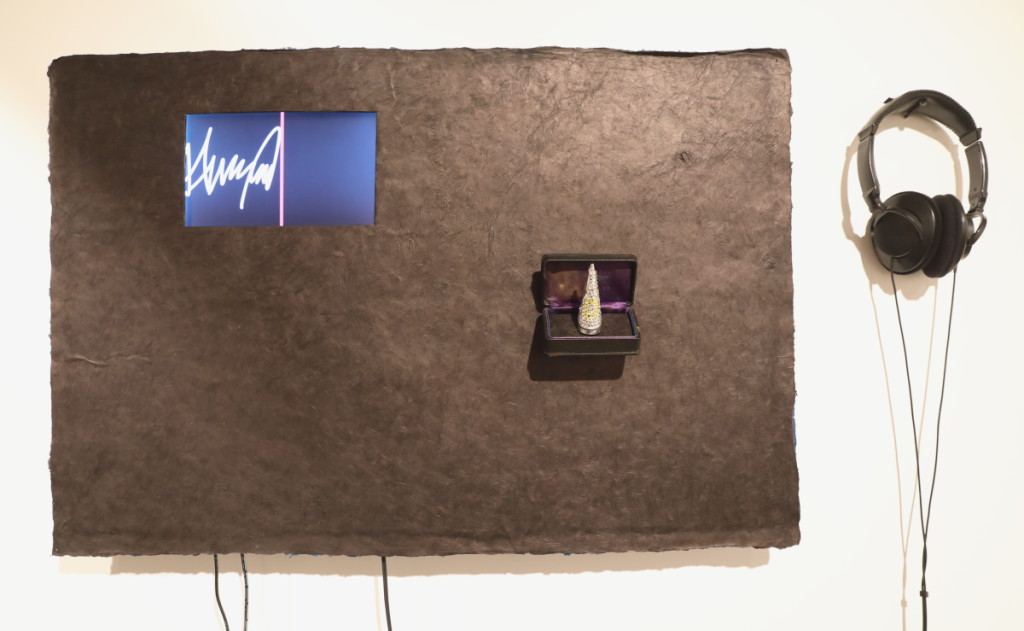
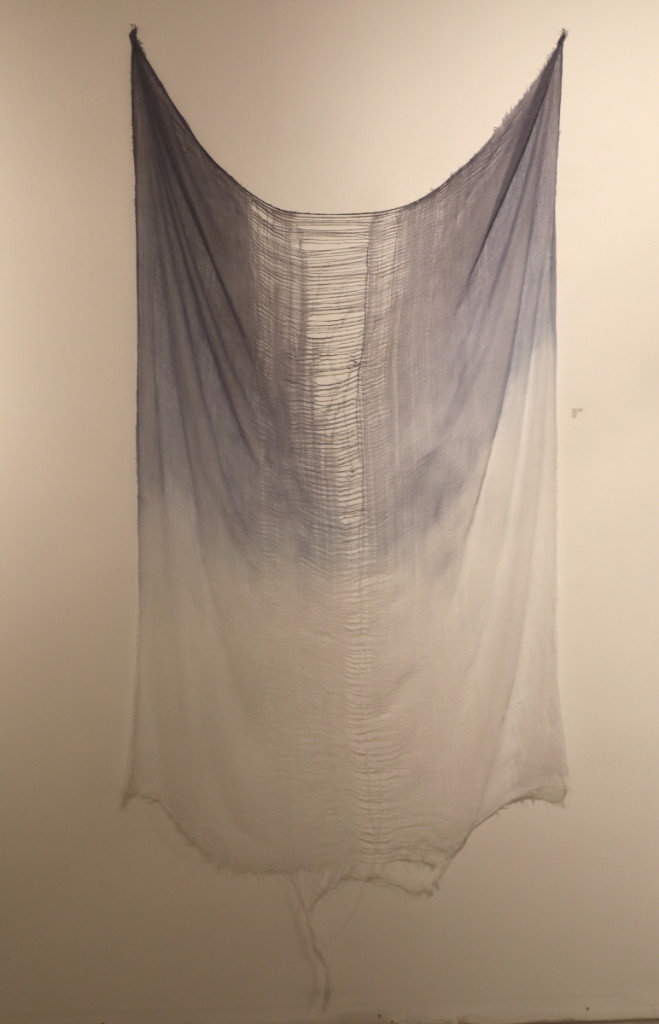


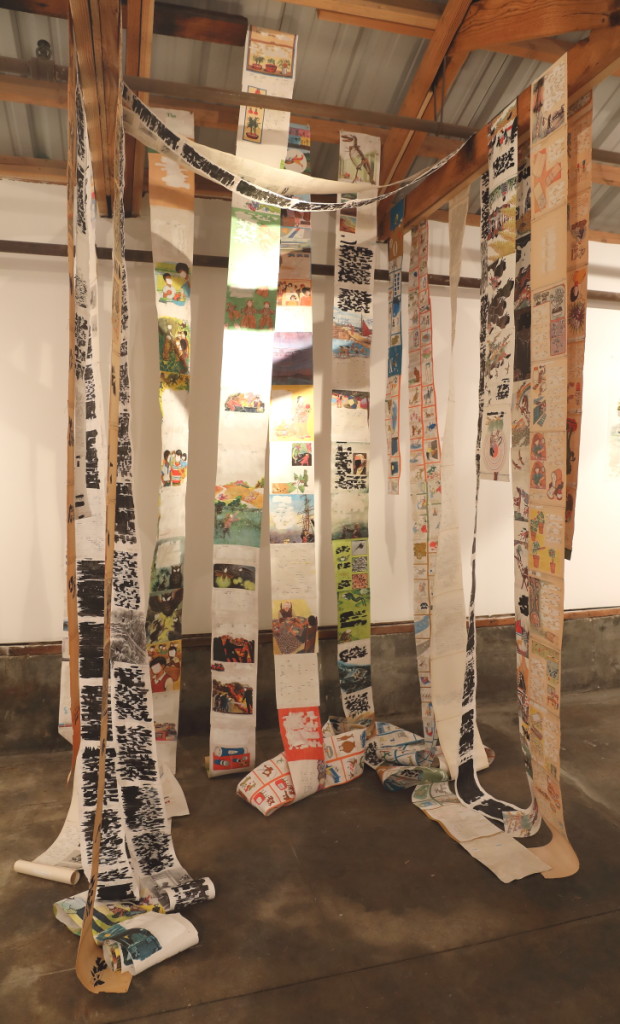

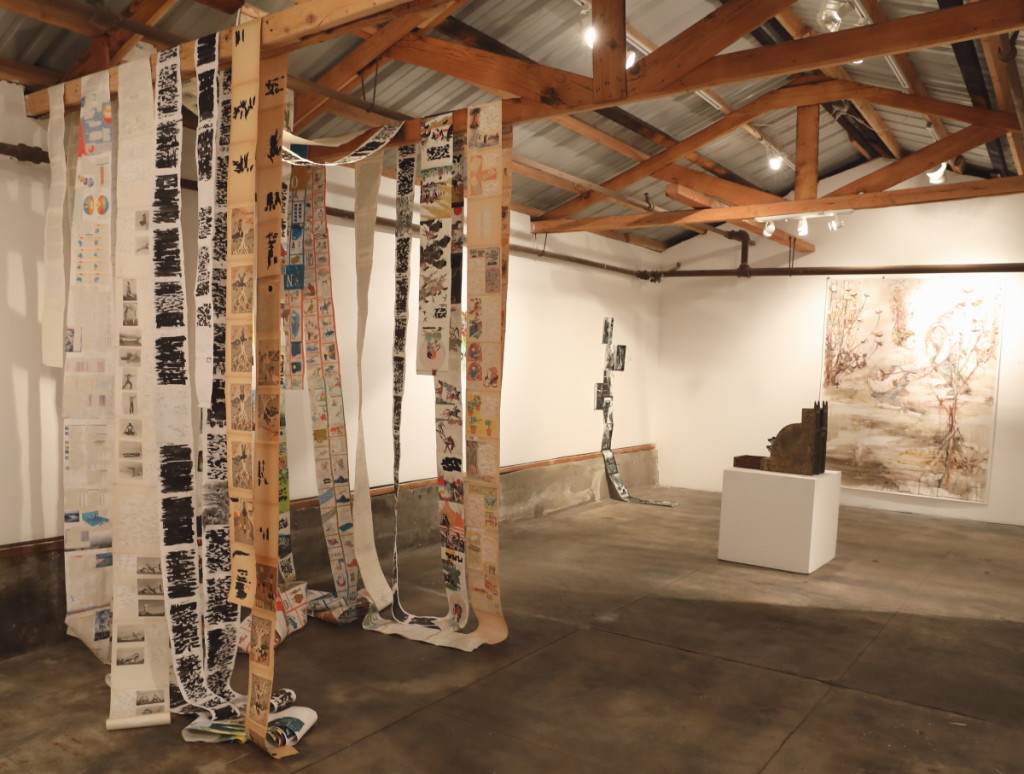

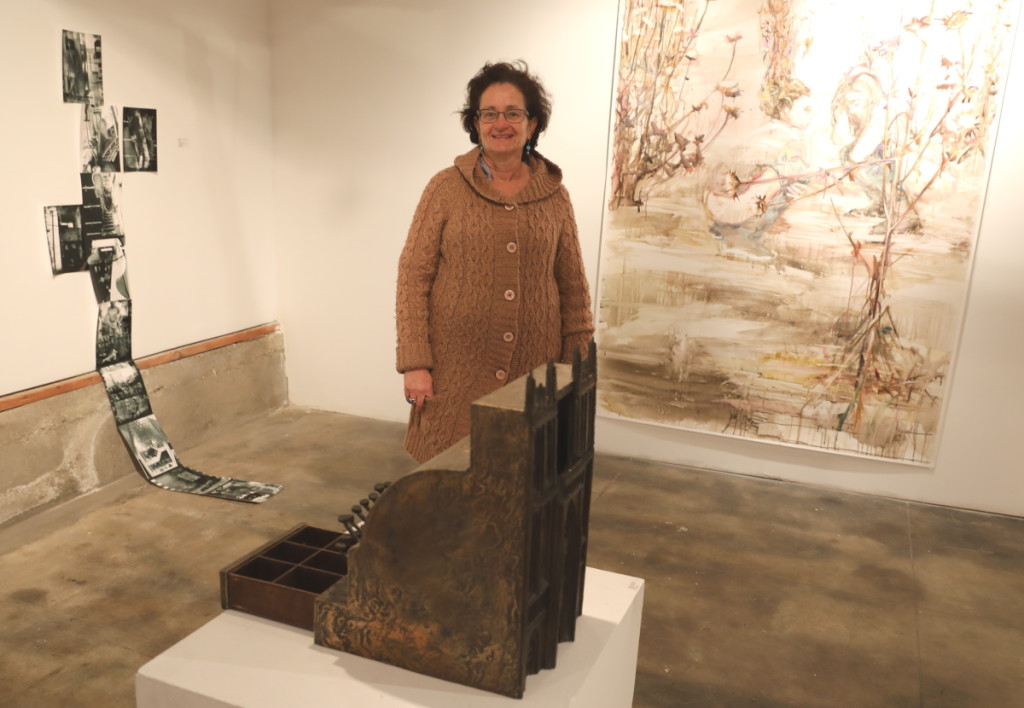

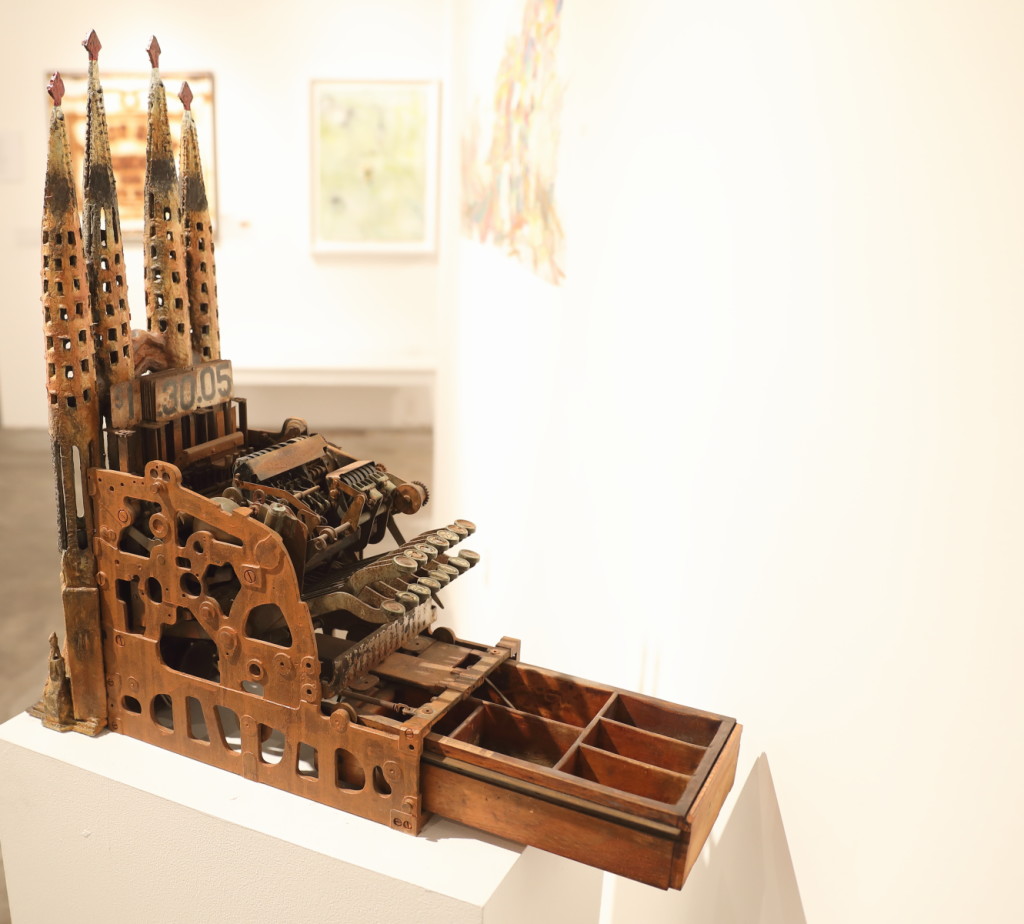
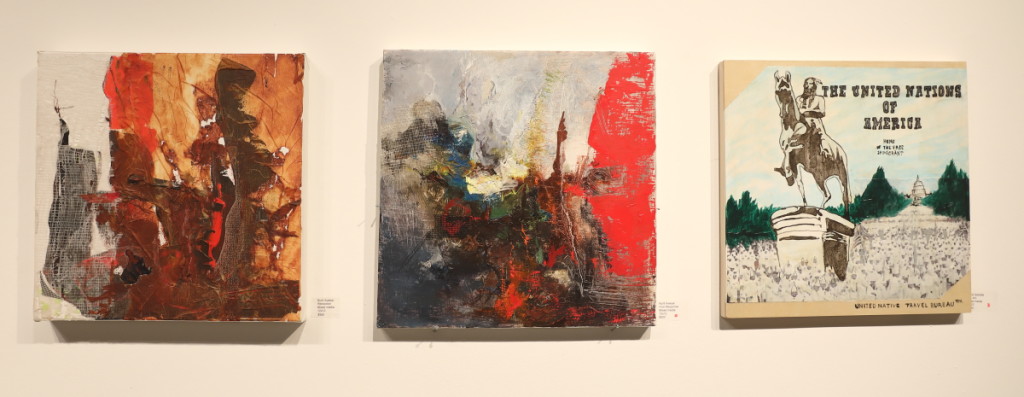

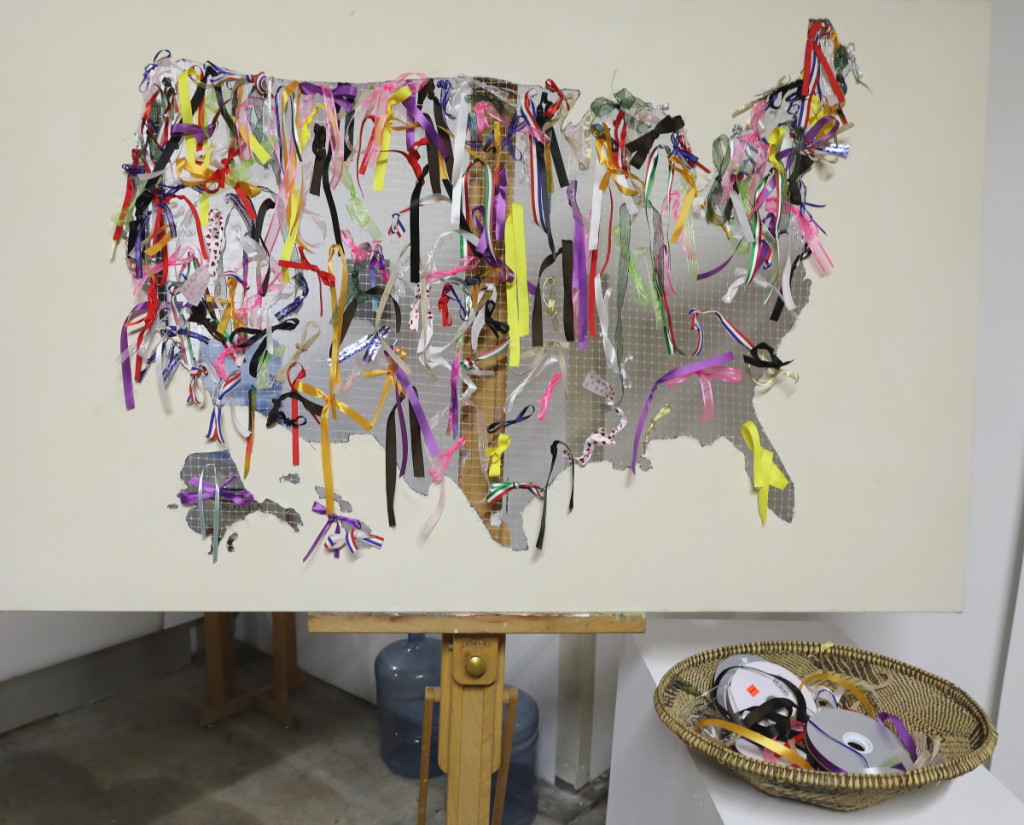

Wonderful as always!
thanks so much!
Thank you Genie Davis for the write up! Bravo Nurit for bringing us together.
absolutely terrific show